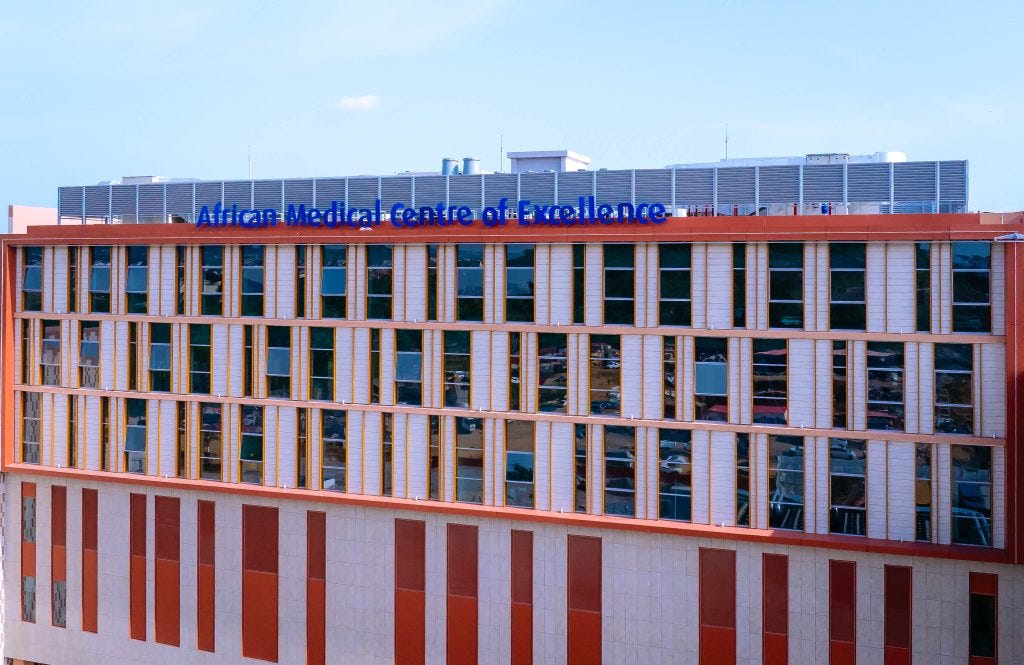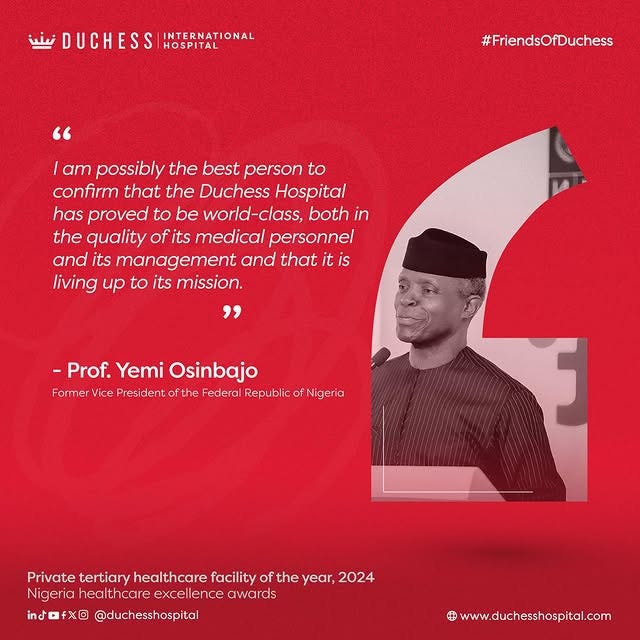Do Nigerians Spend $1 billion on Medical Tourism?
Why the famous $1 billion medical-tourism figure just doesn’t add up and an estimation of the what the true figure could be
Do Nigerians spend $1 billion on medical tourism? If you search on Google, you will be met by a raft of links that answer this question in the affirmative. But is it true? I did a bit of digging and couldn’t believe when I found out that the source for this oft-peddled data may actually be misleading. I most recently came across it in a piece on the Africa Medical Centre of Excellence (AMCE) that opened up last week in Abuja, Nigeria.
A $300 million, 170-bed private tertiary healthcare centre that’s the result of a collaboration between Afriexim bank and King’s College Hospital. Their premise? To stem the tide of medical tourism in Nigeria and to attract patients from West Africa.
Other private tertiary hospitals have also opened up in the last 5 years in Nigeria, adding nearly 300 new hospital beds, largely on the back of this premise. They include the likes of Evercare Hospital in the heart of upscale Lekki in Lagos and The Duchess Hospital, also in Lagos. The latter successfully carried out an orthopaedic operation on the ex-VP of Nigeria, Prof. Yemi Osinbajo, who sang their praises.
These hospitals help plug a significant gap in hospital beds in the country. Beyond the local, they’re counting on this $1 billion medical tourism opportunity to recoup the significant investments they’ve made.
I’ve always accepted this $1 billion figure without much interrogation until I read Nigeria Health Watch’s (NHW) article on the AMCE. It sent me down a rabbit hole where I found out that this estimate was not based on any credible research but simply on the words of a singular doctor, Dr Osahon Enebulele. Come down this short rabbit hole with me.
The reference given in the NHW article is this 2023 paper from Adeoye. Here we see the reference to a $1 billion spend on medical tourism.
The reference trail eventually leads to an unverified remark from 2012. Where did Adeoye get this figure from? He references Abubakar et al from 2016.
Where does Abubakar et al. get their figure from? You will not believe it but it’s from a 2016 BBC report on then Nigerian president Muhammadu Buhari breaking his promise to end medical tourism. In that report, the BBC quotes 2013 figures from a Dr Enabulele, then a VP of the Commonwealth Medical Association, that the amount spent on foreign medical trips was $1 billion.
Just a year earlier, in 2012, the same Dr Enabulele reportedly put the figure at $500 million annually.
So in one year, the amount spent on medical tourism doubled from $500 million to $1 billion. This feels a little difficult to believe.
Let’s do a quick sense check of this claim. The 2012 base year of the claim estimates a $500 million spend. In that same year, figures from the World Bank show that total health expenditure (THE) was 3.36% of GDP. GDP as of 2012 was $464 billion meaning an estimated $15 billion was spent on healthcare in total. A medical tourism spend of $500 million estimate would represent 3% of THE. A significant outlay.
In contrast, official records from the Central Bank of Nigeria from the first half of 2013 reveal that only $1 million was spent on medical tourism via official channels. It’s implausible that over $400 million was sourced from non-official sources to pay for medical tourism expenses. For context, education in the same period consumed $100 million from the official CBN foreign exchange channel. This CBN route establishes the lower bound of an estimate. What could the higher bound be?
For that, let’s look at another credible data source. The 2017 national health accounts published by the Ministry of Health estimates, among other things, expenditures received by healthcare providers. One of the estimates is the amount received by “Rest of the economy/world”.
If we were to crudely assume that this figure fully represents medical tourism (it likely doesn’t) then we can potentially estimate what the upper bound of spending on medical tourism is. The exchange rate used in the document was 1 USD to N315. The N135 billion spent would thus translate to $428,571,428. This was back in 2017. Since then, Nigeria has experienced significant macroeconomic shocks, currency devaluation of over 90% and a GDP per capita that’s now less than $1,000. If people were having routine medical checkups abroad for fun in 2017, they certainly don’t have the incomes to sustain it into the present time. In fact, reverse medical tourism is anecdotally becoming a thing due to a cheap Naira and better hospital facilities, and perhaps that’s the real opportunity that these new private tertiary centres are well positioned for.
Based on the foregoing, it’s safe to say that the market size for medical tourism is likely between $1 million and $400 million. In my estimation, the true value is closer to the lower bound than the upper bound. In all this, what is evident is that we do not know the true value of the medical tourism market, and the oft-quoted $1 billion is certainly far off the mark. The lack of accessible, verified healthcare data handicaps entrepreneurs, financiers and businesses who require this data to make business cases for their businesses and investments. Considering this paucity of data, researchers and public health commentators have a responsibility to ensure that numbers they share in the public domain are grounded in reality and not pulled from the air. Your exaggerated comment for effect might end up as fact a decade later in an academic paper.











Thanks Dr. Neto, particularly loved the triangulation using CBN data. And this has made me to start querying our most cited stats like private sector contribution (oft cited 60%), and one I read today about only 10% of hypertension being controlled. We need to query these assumptions more often and invest a lot more in research and data systems.
I also want to believe most of the investments in these high end facilities is not solely based on this data, the data is just a good sound bite for “impact” of these investments and other big talks.
Hi Neto, I always appreciate your perspectives, but digging into major market assumptions like this one is vital work. It's shocking and unnerving how much market activity is driven by these kinds of claims, which, when you pull at the thread, find that they're based on very little. So thanks for unpacking this particular one.